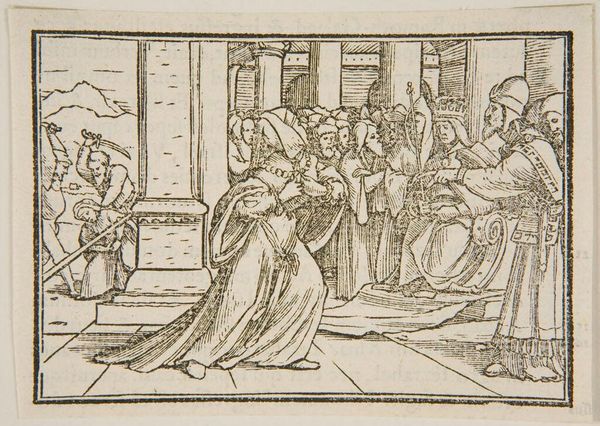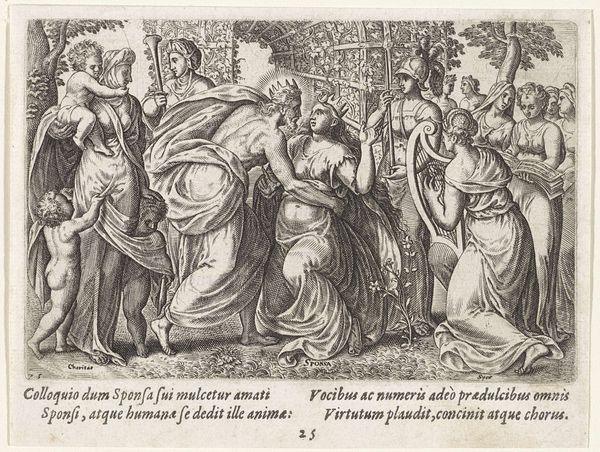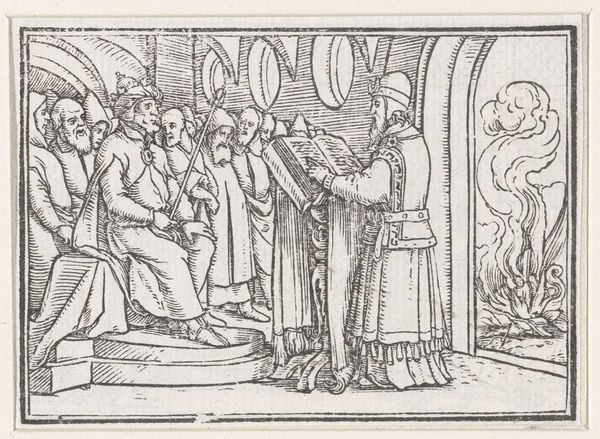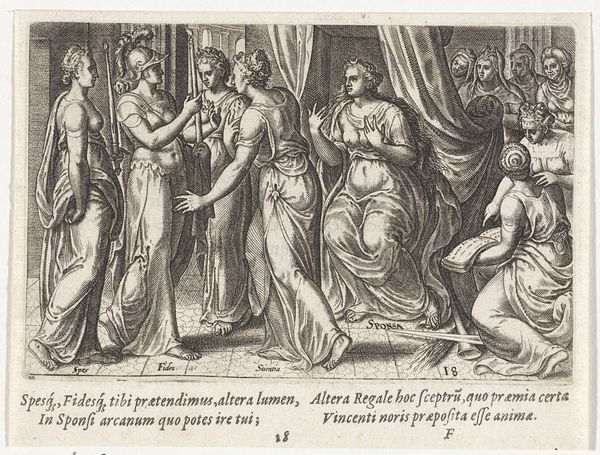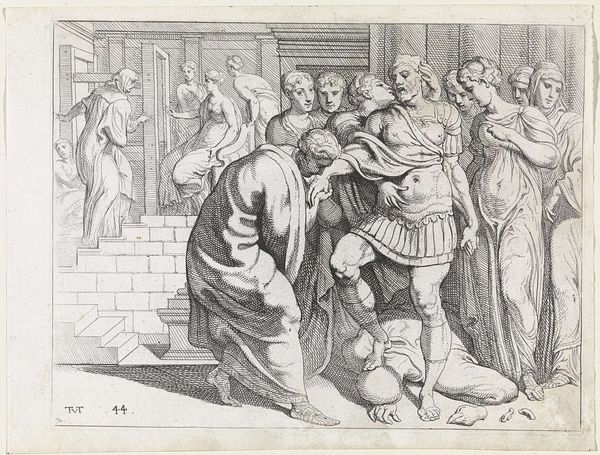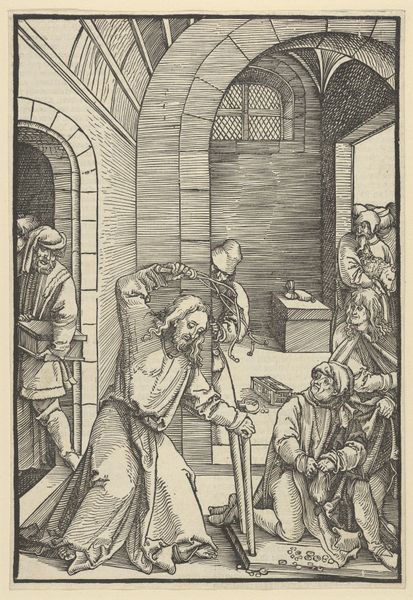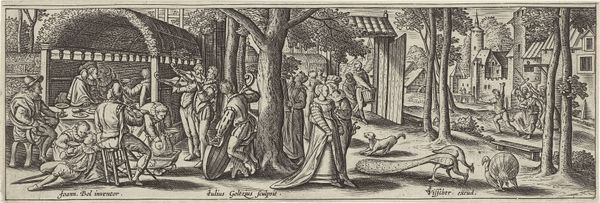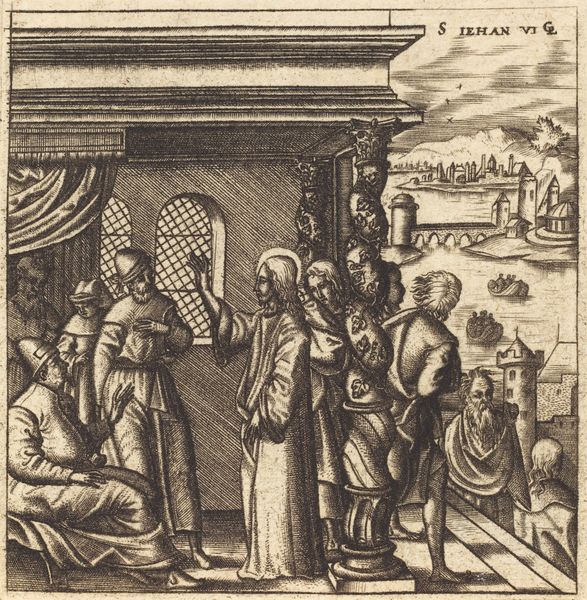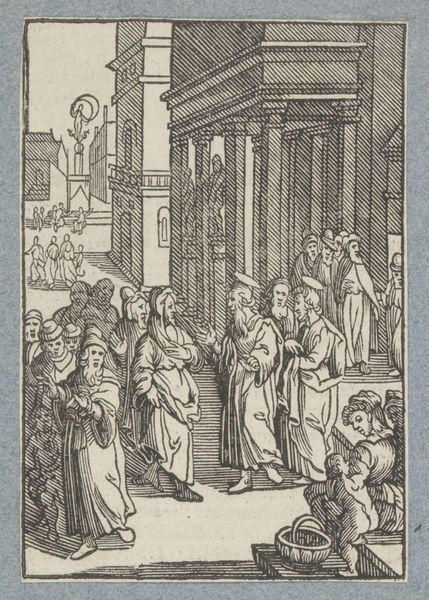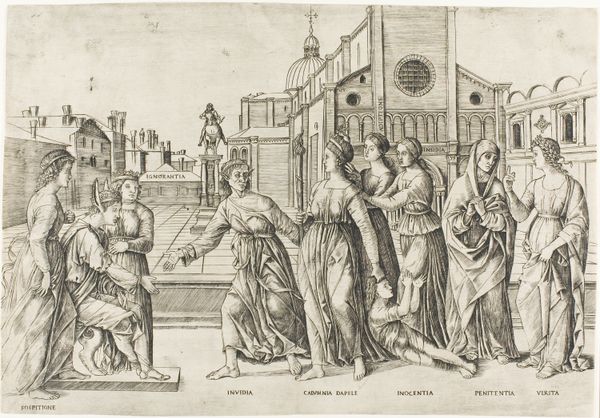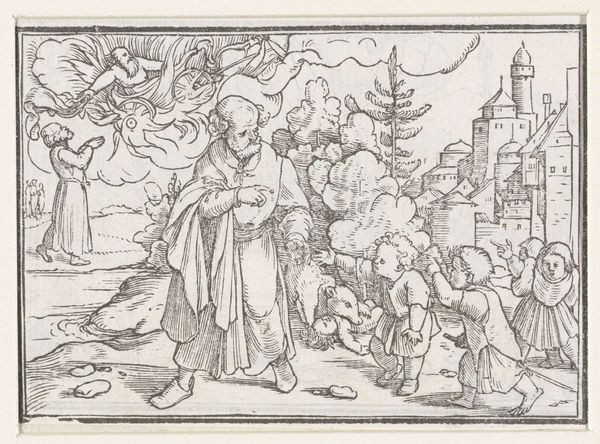
drawing, print, ink, woodcut, engraving
#
drawing
#
narrative-art
# print
#
figuration
#
11_renaissance
#
ink
#
woodcut
#
history-painting
#
northern-renaissance
#
engraving
Dimensions: height 60 mm, width 85 mm, height 85 mm, width 99 mm
Copyright: Rijks Museum: Open Domain
Hans Holbein the Younger created this woodcut, "Atalja scheurt haar kleren voor de hogepriester," sometime between 1526 and 1543. It depicts a scene from the Hebrew Bible where Queen Atalja tears her clothes in anguish before the high priest. Holbein was working during the Reformation, a period marked by religious and political upheaval. His art often engages with themes of power, morality, and the human condition, reflecting the era’s profound social and religious transformations. Atalja, a powerful female ruler, seizes power through ruthless means after the death of her son. The image shows her confronting the high priest, in a moment of intense emotional and political drama. Strikingly, the act of tearing her clothes signifies not only distress but also defiance. Holbein captures the tension between gendered expectations and political authority, challenging traditional representations of women in positions of power. In reflecting on this woodcut, we might consider how it resonates with contemporary issues of gender, power, and justice. It encourages us to question the stories we tell about those in authority and the ways in which we perceive those who challenge them.
Comments
No comments
Be the first to comment and join the conversation on the ultimate creative platform.
